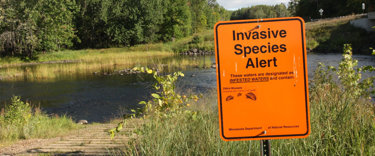Regional risk assessment and prioritisation of invasive non-native species management for raw water transfers
Case study
Invasive Non-Native Species (INNS) are a top 5 driver of global biodiversity loss – biodiversity being a key natural asset. INNs also cause damage in excess of £2bn annually to the UK economy. Socio-economic impacts include serious burns and blisters caused by Giant Hogweed (Heracleum mantegazzianum) whilst zebra mussels (Dreissena polymorpha) can block and crack built assets such as pipes and pumps interrupting and halting operational activity. Effective management therefore based on current and accurate understanding is essential to ensuring sustainable outcomes.

Problem / Opportunity
Water companies have a regulatory obligation through the Water Industry National Environmental Programme (WINEP) to improve the natural environment. Within their AMP7 (2020-25) period, a water company client was required to comprehensively risk assess 14 raw water transfers (RWT) across their operational region to understand the risk of spreading INNS within and across catchments. This was required for the client to better understand future mitigation investment planning.
Solution
We provided a phased approach to understand, risk assess and prioritise 14 RWTs owned and operated by a water industry client across three different counties. We applied the Pollution-Pathway-Receptor model – an established approach commonly associated with pollution management. This ensured we developed an understanding of each component, the linkages between and therefore the RWT route in its entirety to provide a consistent, holistic approach for effective future management.
Our team used our multidisciplinary expertise and client relationship-building capabilities to rapidly engage Environment, Water Resources and Asset Data Services teams collating information and data.
We then ground-truthed this desktop understanding with site-specific insights visiting 24 distinct intake and discharge locations including reservoirs within the RWT programme. Our coordination and involvement with client Operations personnel and scheduling of visits provided multiple benefits and added value. We collected invaluable local intelligence, saved the client >£5k on site visit costs and simultaneously improved the awareness and understanding of the risk of INNS amongst the Operations teams.

We presented this in 14 RWT Site Profiles with associated photos and maps to provide the client, in a 14 SThe data and information was Once our data and information gathering was complete, we produced RWT Site profiles to give the client, Operations teams the regulator accessible overviews of each RWT. This allowed us to present encountered nuances and complexities such as the historical network of artificial leat systems associated with one RWT.
Using a bespoke INNS Risk Assessment Scoring Tool we were able to input data and information and finally produced a tabulated and quantitative risk ranking of all the RWTs in the investigations programme.
Outcome
The team provided Site Profiles and Risk Assessments for all 14 RWT across three counties the client operates in highlighting environmental, asset condition and stakeholder biosecurity (Check Clean Dry) opportunities and risks.
A comprehensive data and information register comprising of over 600 data and information points across the RWTs was handed to the client for ownership and to ensure iterative improvement and facilitate effective future decision-making and management.
The client was able to submit their RWT programme to regulatory deadlines and quality expectations during a demanding period. The EA approved all deliverables to allow future targeted planning and mitigation with both the client and regulator providing positive feedback.
Latest case studies
 Case Studies
Case StudiesIndependent assurance verifies robustness of Anglian Water pollution reduction programme
 Case Studies
Case StudiesAssurance transformation plan helps Northumbrian Water meet new reporting requirements
 Case Studies
Case StudiesRegulatory assurance submissions to support PR24 business plan for South West Water
 Case study
Case studyMains replacement programme for Dŵr Cymru Welsh Water
Here to solve your biggest challenges and grow sustainable value
Our expert consultants are available to broaden your thinking, lead transformation, and help you achieve successful outcomes.
Contact our experts

